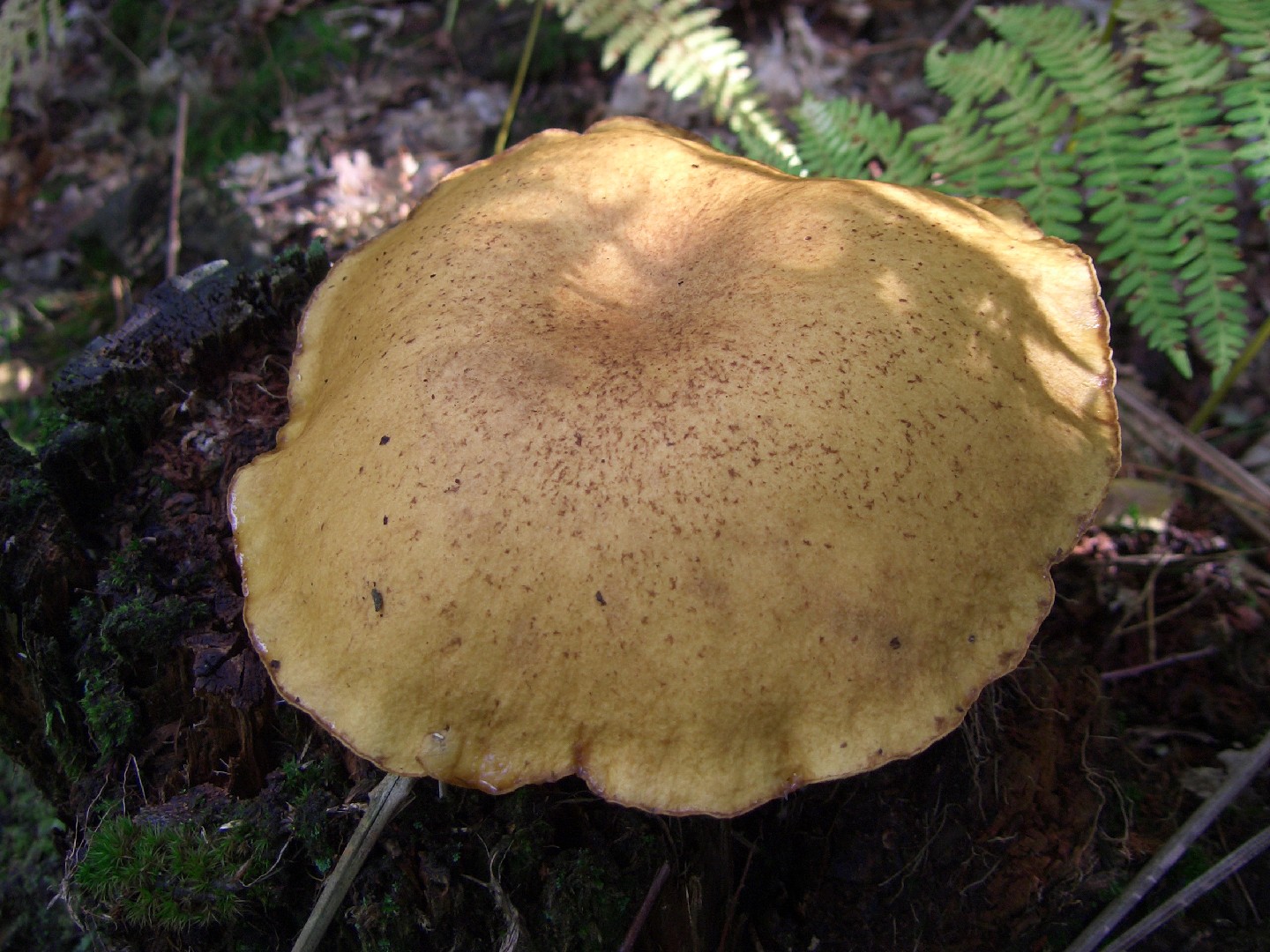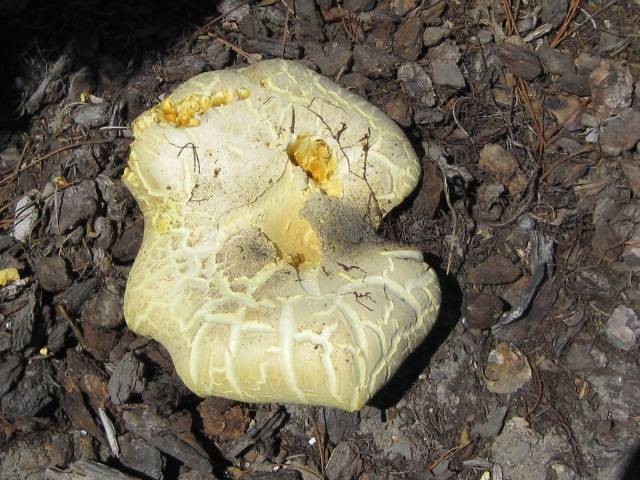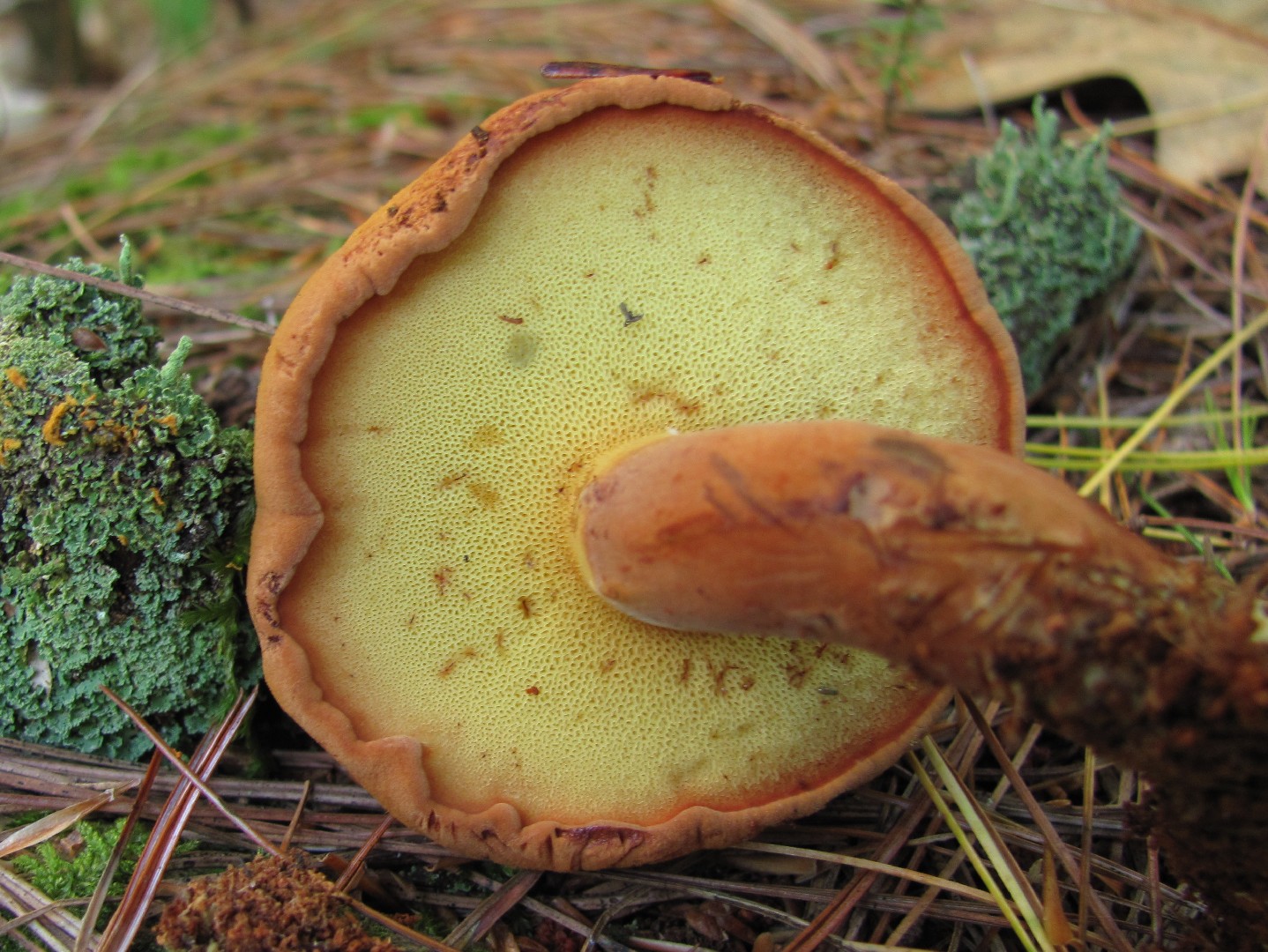Buchwaldoboletus
Nome científico: Buchwaldoboletus
Buchwaldoboletus
Nome científico: Buchwaldoboletus
 Photo By Mars 2002 , used under CC-BY-SA-3.0 /Cropped and compressed from original
Photo By Mars 2002 , used under CC-BY-SA-3.0 /Cropped and compressed from original Descrição
Buchwaldoboletus é um grupo fascinante de fungos, especialmente conhecido por sua relação distintiva com determinadas árvores e arbustos, frequentemente formando associações simbióticas com eles. Eles geralmente apresentam cores vibrantes e chamativas, variando do amarelo-dourado ao marrom-escuro. Algumas espécies deste grupo podem ser encontradas crescendo em madeira em decomposição, desempenhando um papel ecológico importante no ciclo de nutrientes. Seus corpos frutíferos normalmente aparecem no final do verão e no outono, tornando-se uma descoberta única em áreas florestais.

